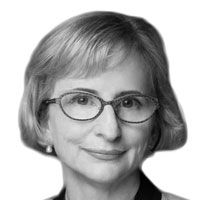Celebrating indigenous communities

Australia and the Philippines both have vibrant Indigenous cultures that form a vital part of our national identities. National Indigenous Peoples’ Month is a time to celebrate successes, but also to raise broader awareness of the social and cultural issues faced by many indigenous people in both countries.
We recently hosted the visit of Australian Indigenous academic Emeritus Professor Mary Ann Bin-Sallik AO. She is a Djaru woman from Australia’s East Kimberly who was the first indigenous Australian from Darwin to graduate as a trained nurse, to be employed full time in the tertiary education sector; and to gain a Doctorate from Harvard University. Professor Bin-Salik’s involvement in government and community advisory groups has greatly influenced education and equity policies for Indigenous Australians.
Professor Bin-Sallik was Australia’s delegate to the Dayaw, the Philippines’ International Indigenous Peoples’ Festival in Capiz, held to celebrate National Indigenous Peoples’ Month. She spoke there – as well as at the University of the Philippines campuses in Iloilo and Manila – about Indigenous cultural traditions as well as her own journey from pioneer to leader in Indigenous education.
This visit was also a ‘homecoming’ for Professor Bin-Sallik. Her grandfather, Dorothio Zuriaga, was originally from Antique. He was among the young Filipinos who migrated to Australia in the early 20th century to work in the pearling industry. She was delighted to visit her grandfather’s hometown and meet potential family.
At the international level, both Australian and the Philippines support the UN Declaration on the Rights of Indigenous Peoples.
In line with the principles of the Declaration, the Australian Government is working to recognise Indigenous Australians’ connection to land, to maintain and revitalise languages and to recognise spirituality, and support for cultural expression.
We acknowledge that the gap between Indigenous and non-Indigenous Australians in key life indicators remains unacceptably wide. The government is driving significant national effort to improve education, health and employment outcomes, including by supporting Indigenous Australians to lead local solutions. Indigenous peoples in the Philippines are also amongst the most marginalised.
Australia’s commitment to close the gap between Indigenous and non-Indigenous communities is also reflected in our partnership with the Philippines.
The Australian Embassy has contributed to indigenous people’s welfare in the Philippines through cultural projects, such as supporting the endangered craft of handloom weaving among Maranao women; and livelihood projects, including providing post-harvest facilities for the Maguindanaoan, T-boli, and Manobo coffee farmers of Lake Sebu in South Cotabato. In Davao we are supporting the Bogobo Tagbanua who are taking on roles as forest guards to help conserve the nesting site of the majestic Philippine eagle.
Our most significant contribution has been in the area of education:
We have worked with the Department of Education to implement a curriculum that emphasises a culturally-sensitive indigenous education. It is now taught at public and private schools in Regions 11 and 12, providing a higher standard of education to children across 12 different tribal groups.
Australia’s support has also helped build and equip over 236 tribal or community learning centres to provide literacy and livelihood classes for parents and out-of-school youth.
We also have a proud tradition of supporting indigenous communities through Australia Awards scholarships.
Assistant Secretary Ana Marie Banaag, from the Presidential Communications Operations Office, one of our most prominent indigenous alumni, is a leading supporter of women’s participation in politics. She is also a tireless advocate of IP rights.
She demonstrates the personal and community-wide transformational impact of a good education.
In National Indigenous Peoples’ Month let us celebrate these women and the many other indigenous peoples working for improvement. Let us all consider what more we can do to support them.
* * *
(Amanda Gorely is the Australian Ambassador to the Philippines. Follow her on Twitter @AusAmbPH)
- Latest
- Trending



























